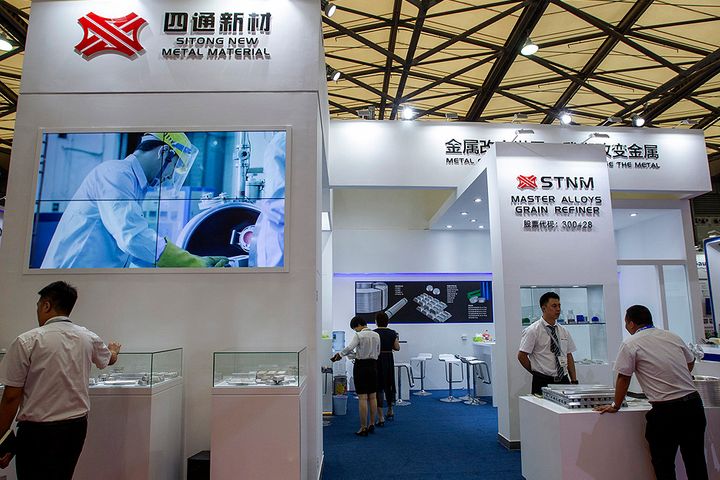 Sitong, CAS to Jointly Develop New Rare Earth Alloys
Sitong, CAS to Jointly Develop New Rare Earth Alloys(Yicai Global) Dec. 31 -- Hebei Sitong New Metal Material will work with the Chinese Academy of Sciences to research and develop rare earth-aluminum and rare earth-magnesium alloys, as well as new production processes for conventional cars, new energy vehicles and aerospace applications, Sitong said in a statement today.
Sitong shares [SHE:300428] opened at CNY14.08 (USD2) this morning, up 1.22 percent on the news, but dipped to CNY14.16, up 1.8 percent, at the lunch bell.
The company, whose headquarters lie just outside Beijing, and the Baotou Rare Earth Research and Development Center of CAS will set up a joint R&D center. The Baotou Rare Earth R&D Center, which is in North China's rare earth-rich Inner Mongolia Autonomous Region, will implement the project, while Sitong will supply funding, equipment and personnel. The two will share the intellectual property their collaboration yields, per the statement, which omitted any mention of investment amounts.
The pair will also form a joint venture with a 50-50 percent shareholding ratio when their cooperation bears fruit. Baotou Rare Earth R&D Center and the project R&D team will use the results as intangible assets to invest in the JV, while Sitong will input cash.
China is the world's top rare earth producer, with deposits estimated at about one-third of the world's 100-odd million tons of reserves.
A rare-earth element or rare-earth metal is one of 17 chemical elements, including cerium (Ce), dysprosium (Dy), erbium (Er), europium (Eu), gadolinium (Gd), holmium (Ho), lanthanum (La), lutetium (Lu), neodymium (Nd), praseodymium (Pr), promethium (Pm), samarium (Sm), scandium (Sc), terbium (Tb), thulium (Tm), ytterbium (Yb), and yttrium (Y), according to the International Union of Pure and Applied Chemistry. Rare earth metals and their alloys are used in computer memory, DVDs, rechargeable batteries, mobile phones, catalytic converters, magnets, fluorescent lighting and many other applications.
Editor: Ben Armour